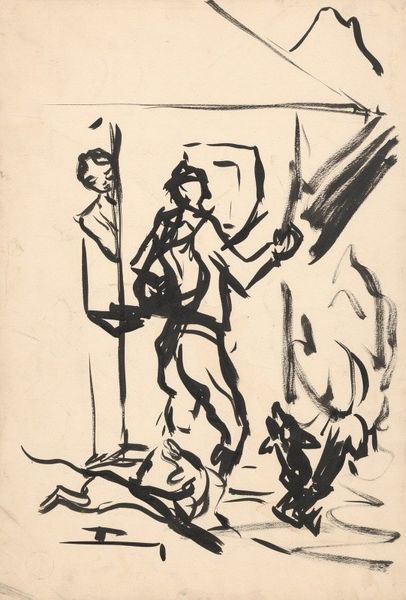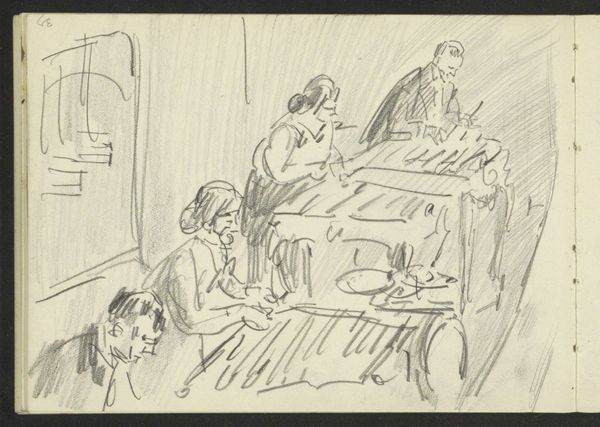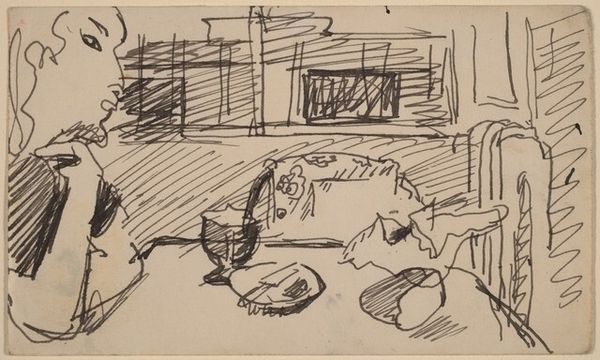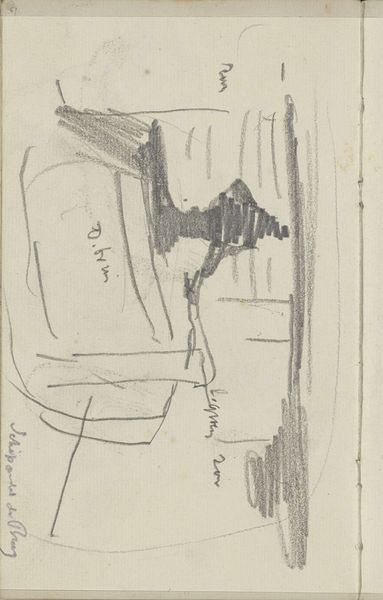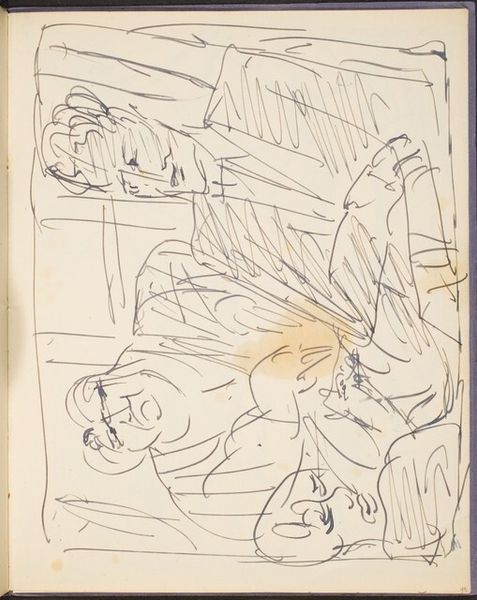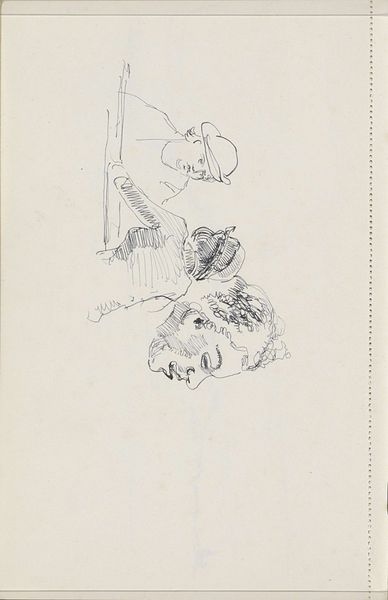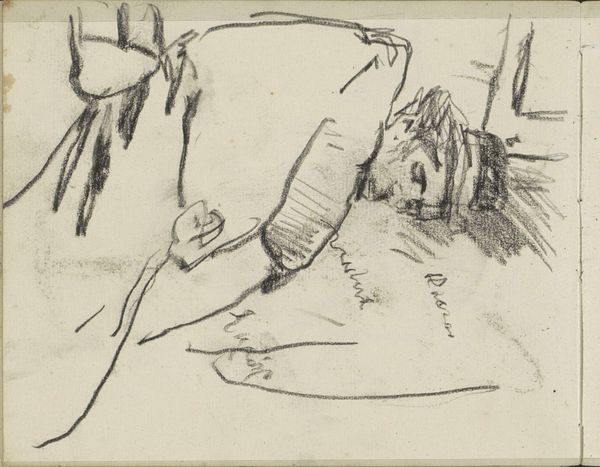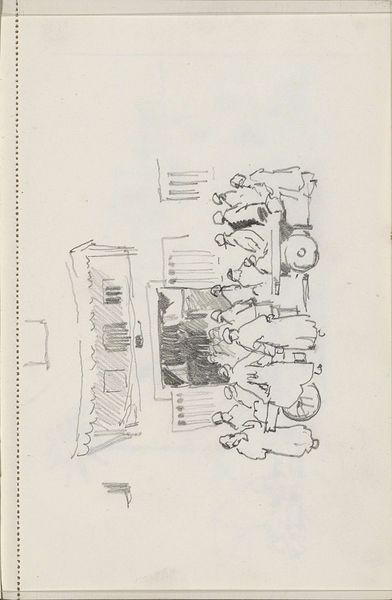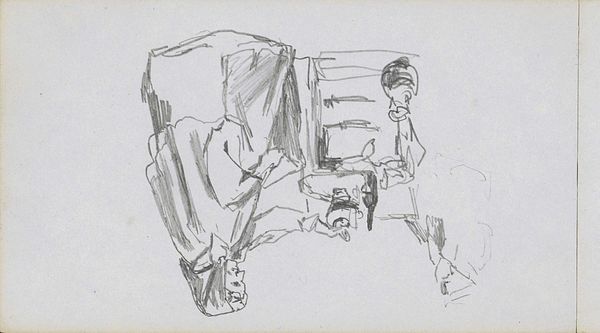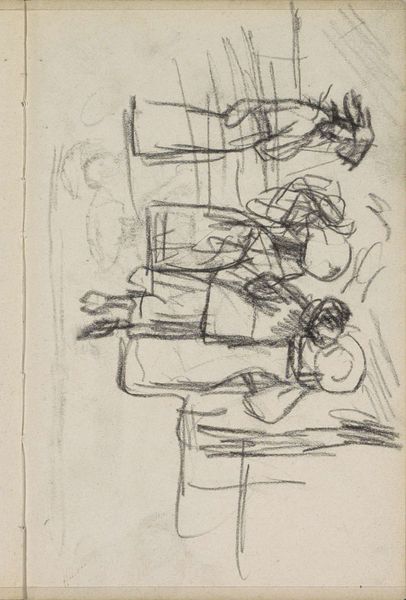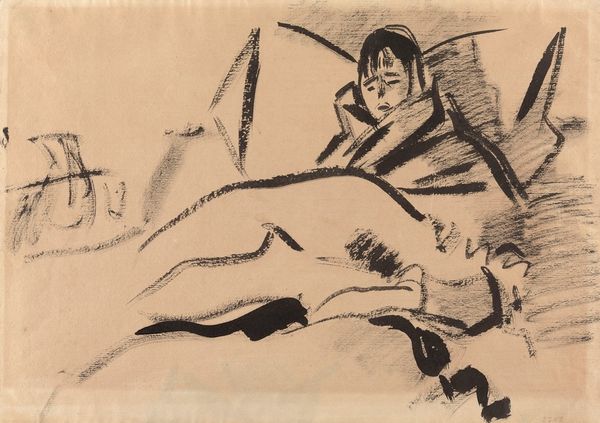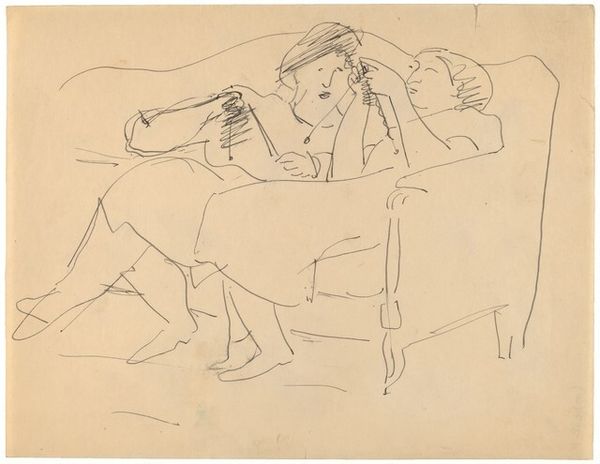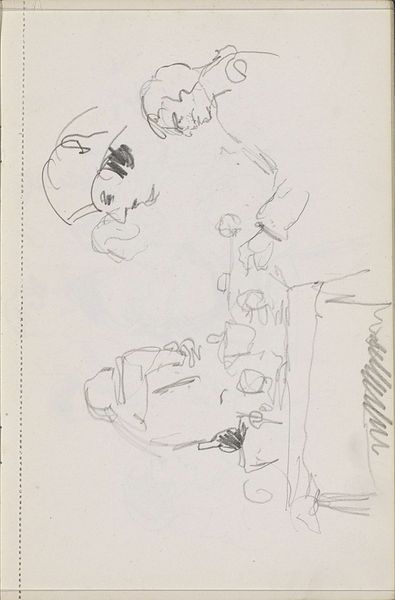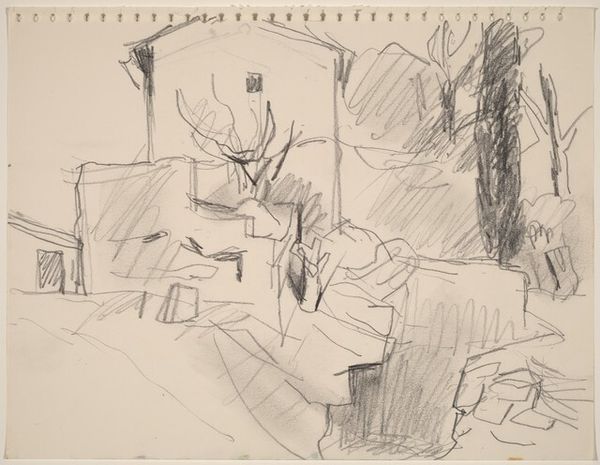
Murder in the Ackerstrasse (Mord in der Ackerstrasse) 1916 - 1917
drawing, print, ink
drawing
comic strip sketch
new-objectivity
ink drawing
narrative-art
pen illustration
pen sketch
german-expressionism
cartoon sketch
ink line art
linework heavy
ink
ink drawing experimentation
pen-ink sketch
expressionism
pen work
cityscape
Dimensions: image: 24.45 × 24.92 cm (9 5/8 × 9 13/16 in.)
Copyright: National Gallery of Art: CC0 1.0
Editor: So, this is George Grosz’s "Murder in the Ackerstrasse," made around 1916 or 1917. It seems to be an ink drawing, reproduced as a print. There’s a chaotic energy to the composition and the subject matter is pretty grim, a real sense of anxiety pervades. What strikes you when you look at this work? Curator: Immediately, I see the iconography of disruption and collapse. Grosz uses the domestic interior, traditionally a safe haven, and transforms it into a space mirroring the fractured psychological landscape of post-war Germany. Notice the barbed wire motif subtly placed near the ceiling – a recurring symbol throughout his oeuvre. What might that represent? Editor: Probably the lingering presence of World War I, right? Even though the scene is indoors, that imagery is so visceral, you can’t escape it. It changes your whole reading of the interior. Curator: Exactly. Consider how the skewed perspective and the jarring angles—they’re not just aesthetic choices. They reflect a deeper societal unease, a world turned upside down by violence and trauma. The disarray isn’t just physical; it represents a moral and spiritual disintegration. It is important to consider the artist's use of satire, here. Editor: Right, I see that now. The chaotic details are definitely intentional, conveying a specific feeling of trauma. Curator: And think about how Grosz uses specific symbolic figures; in several works he depicts authority figures, clergy, and military men who he believed upheld a decaying societal system. Does he present them flatteringly or critically in his other works, do you think? How might this connect to "Murder in the Ackerstrasse"? Editor: Based on the atmosphere in this print, I'd say it is meant to criticize, showing how individuals are almost complicit in the moral decay that enabled and resulted from such conflict. It does offer a complex commentary. Curator: Precisely. Seeing this artwork now, in the context of so much modern violence and decay, I now recall an apt historical memory. Thank you, it really reframed the message for me. Editor: Thank you! This look at the cultural memory behind this print offers an entire level of historical and psychological reading that I hadn’t noticed.
Comments
No comments
Be the first to comment and join the conversation on the ultimate creative platform.
